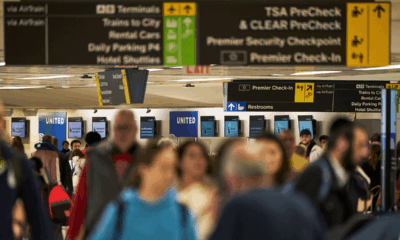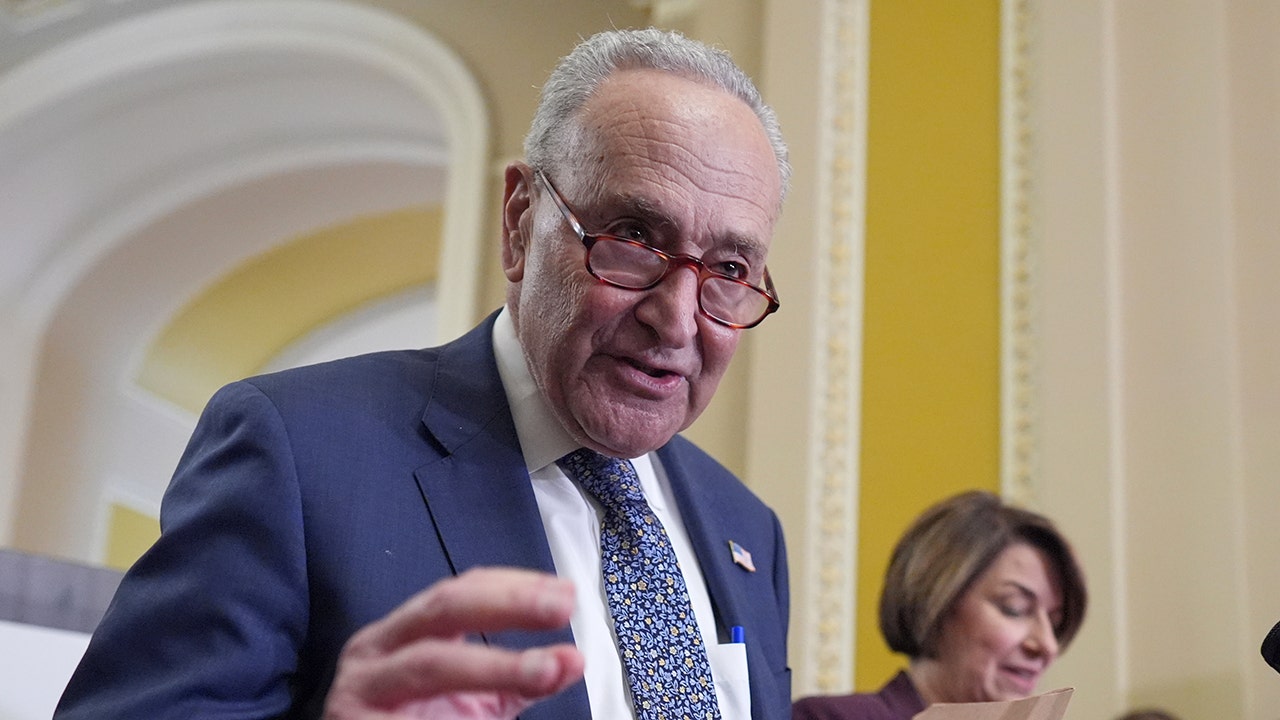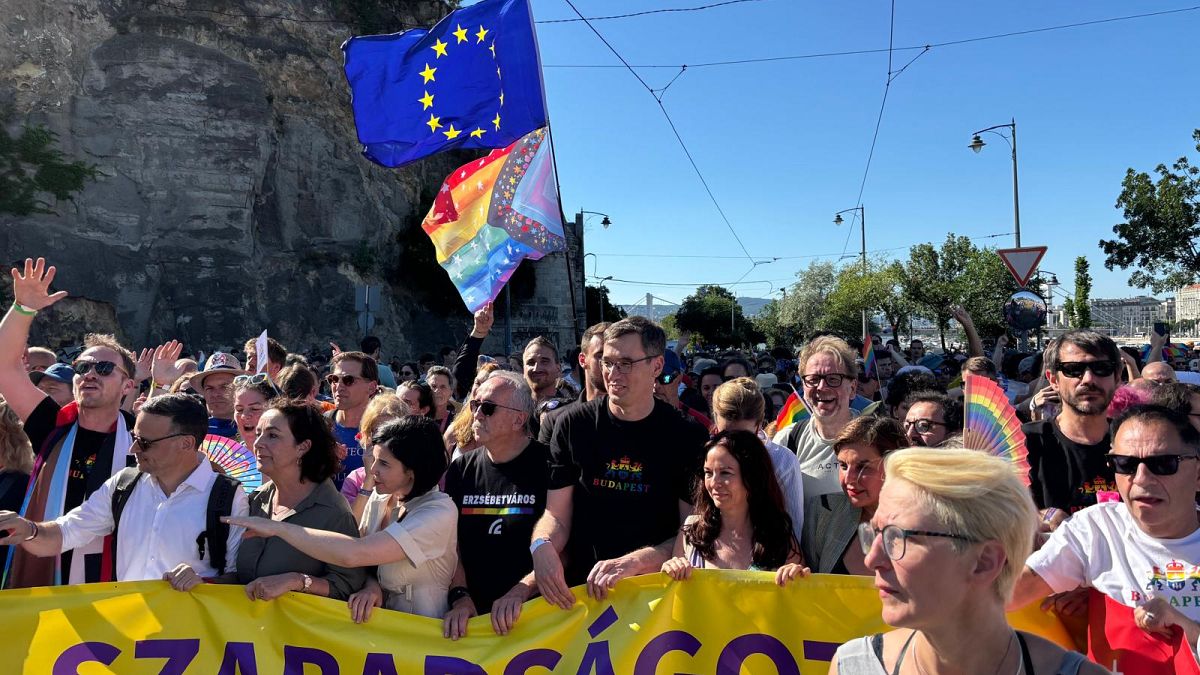Lifestyle
On the precipice of turning 40, I sometimes wonder: Where can one find paradise?

In our household, beauty wore different names. This was back in 1995, when we lived on 58th Place, in the upstairs unit of an ash-white triplex in Ladera Heights, many miles south of the glamour and stock beauty of Hollywood Boulevard. The beauty in our home didn’t announce itself like it did in the movies I worshiped during countless weekend family trips to the Marina del Rey theater. There was no pageantry or grand exposition behind its reason for being. In our household, beauty just was.
Lately, I’ve been trying to find my way back to beauty. On the precipice of turning 40, somewhere halfway through this marathon of a life, I want to exhume what I feel I’ve abandoned and lost. I want to recall what’s been washed away by the pull of adulthood, what age and responsibility demand that we compromise, that we let go of. I again want to remember what’s worth finding.
So I reach back as a way forward.
Beauty was the configuration of my mother’s deliberate care. It was love baked into grilled cheeses and currents of laughter that swept through the house during unexpected moments of long quiet. Beauty was also coyly positioned, always in view of my and my brother’s drifting curiosities, like the framed print of “Jammin’ at the Savoy” by Romare Bearden that she hung just outside the kitchen’s entrance that I loved so much, that I sometimes wanted to live inside of, debonair and irreducibly cool like Bearden’s jazz men.
Many years later, in graduate school, when I first read “Sonny’s Blues,” a short story originally published in 1957 by James Baldwin about family and addiction, I would think back to this painting, in this house, and how its beauty halted me in my tracks, how it dared me to pause and consider my place in the wide world. “For, while the tale of how we suffer, and how we are delighted, and how we may triumph is never new,” Baldwin wrote, “it always must be heard. There isn’t any other tale to tell, it’s the only light we’ve got in all this darkness.”
The narrator of Baldwin’s story watches from the audience as his brother, a pianist, plays onstage. He’s moved by what he sees, the beauty of it all. Baldwin understood, as I later would. In a country that has never given Black people very much, beauty was our right. Not physical beauty — though we also had a right to that — but made beauty. Beauty built from and for love.
Personalized. Tender. Yours.
More often than not, beauty appeared in one very specific form. At least once a month, my mother would pull birds of paradise from the downstairs bush, arrange them like so, place them in a vase and position the flowers as a centerpiece in the living room atop our mahogany coffee table. At the time, I was obsessed with Marvel comics and action flicks like “Mortal Kombat” and “Batman Forever.” I didn’t know anything about flowers really, but I knew this one was badass, with its sword-sharp silhouette and inferno-orange coloring. This was how the bird of paradise first made itself known to me.
In most Black homes, the living room is off-limits save for special occasions. Ours was no exception. Through my eyes, this gave the flower a unique significance. I secretly loved how the flower craned skyward, never quick to diminish its presence, what I considered its sharp elegance. It was something to be cherished. In our household, it wasn’t just beautiful, it also gave our beauty meaning.

Today, the bird of paradise is one of the predominant flora across the city. It also wears many names — the African desert banana, the crane lily — but formally, it is known as Strelitzia reginae and is one of five species of Strelitzia. “They were widely planted in the early days of Los Angeles,” Philip Rundel, a UCLA professor emeritus in the department of ecology and evolutionary biology, says of how the plant arrived in California.
Originating in the KwaZulu-Natal provinces of South Africa, on the Eastern Cape, the bird of paradise found its way to the Huntington Library, Art Museum, and Botanical Gardens in San Marino sometime before 1932, when the institution’s record-keeping began, explains Kathy Musial, senior curator of living collections. By the next decade, Japanese flower farmers were growing them across the Southland; the species was able to survive on little water and stretched up to five feet tall. In 1952, as L.A. celebrated it 171st year, the bird of paradise was designated the official city flower by Mayor Fletcher Bowron, a Republican with a nasty appreciation for internment camps who would lose a bid for reelection that same year. (While state flowers are common, many cities also appoint a specific flower as a local insignia.)
Often, in spite of its spoiled political terrain, L.A., like the bird of paradise, found a way to sprout. It grows “slowly but steadily,” Rundel tells me.
There it is — occupying manicured lawns in View Park, lining the boulevards of Historic Filipinotown and Little Armenia. At Mahalo Flowers in Culver City and Century Flowers in Inglewood, the multiuse plant is ceremoniously styled in floral arrangements bought by customers. As regional emblems go, only the palm tree seems to rival the bird of paradise in popularity.

“It’s a very charismatic flower. Its form and coloration are quite striking,” Musial says. I ask her what it best personifies about L.A. I want to know what makes it special despite it now being so commonplace. “It can adapt to a range of growing conditions,” she continues. “It is a good symbol for a cosmopolitan city that is home to lots of human transplants — from other parts of the U.S. and around the world.”
Rundel suggests another interpretation. “It’s a beautiful plant,” he says, “sturdy and hard to kill.”
Yes, I think. That’s it. Because isn’t that what beauty is, in all of its prismatic totality — hard to kill, always in bloom?

Everything I’ve learned since those years when we lived on 58th Place has stayed with me. What my mother had accomplished was simple but lasting. The beauty we make establishes a sense of order. It grounds us in who we are, gives our chaos body. At its most brilliant and spectral, beauty helps us hold on.
And because the world, and one’s continued engagement with it, is a repeated litany of small erosions, it is through the practice of beauty that we learn to survive, to soar even. It helps one find newer, better ways of being. Yes, failure will make itself known. It will attempt to convince you that it is your only option. But it is the order we find in the beauty we make, in ourselves and others, just as we do in the things around us, that sustains and comforts.
Like winged creatures of the sky it draws its nickname from, the bird of paradise seems always ready for takeoff, angling itself toward the light of better tomorrows, or at least the possibility of them. It’s what I remind myself of when life gets hard. Because though it was never guaranteed in our household, in those years following the rebellion, in those sometimes unsteady months as a new family of three in the haze of my parents divorce, we held on to the depth of that possibility no matter what came our way.
Now, well into adulthood and everything adulthood urges of the body and mind, I sometimes wonder, where can one find paradise?
It’s all around us, I’ve learned, but it is also inside of us. In the molecules of my memory, I hold on to the punctuated beauty of the flower because I believe in what it can accomplish, in what it returns, in what it allows room for. In the molecules of my memory, it sings, and what it sounds like is home.
It sounds like a kind of paradise.

Jason Parham is a senior writer at Wired and a regular contributor to Image.

Lifestyle
J.M. Smucker plans to remove artificial colors from its jams and other products

A jar of Smucker’s preserves is displayed on Aug. 16, 2010, in Philadelphia.
Matt Rourke/AP
hide caption
toggle caption
Matt Rourke/AP
J.M. Smucker Co. plans to remove artificial colors from its products by the end of 2027.
Orrville, Ohio-based Smucker said Thursday it will also remove synthetic dyes from foods sold to K-12 schools by the 2026-2027 school year.

Smucker said the majority of its products — including its Uncrustables sandwiches — are already free of synthetic dyes. But some products still have them, including sugar-free jams and ice cream toppings.
Smucker said some products from Hostess, which it acquired in 2023, also contain artificial colors. Twinkies are made with Red 40 and Yellow 5, for example, while Snoballs snack cakes are made with Red 40 Lake, a dye combined with aluminum to keep it from dissolving in water.
Smucker joins a growing number of big food companies that have announced plans to eliminate artificial dyes. Earlier this week, Nestle and Conagra Brands — the parent company of Duncan Hines — both said they would phase out synthetic dyes. Kraft Heinz and General Mills made similar pledges last week.

The federal government has stepped up its scrutiny of artificial colors in recent months. In January, days before President Donald Trump took office, the U.S. regulators banned the dye called Red 3 from the nation’s food supply, nearly 35 years after it was barred from cosmetics because of potential cancer risk.
In April, Trump’s Health Secretary Robert F. Kennedy Jr. and FDA Commissioner Marty Makary said the agency would take steps to eliminate synthetic dyes by the end of 2026, largely by relying on voluntary efforts from the food industry.
Lifestyle
L.A. Affairs: My roommate had sun-kissed skin and a movie-star smile. Was he my Romeo?

I grew up in Los Angeles a hopeless romantic with my head permanently tilted toward the sky and a copy of “Romeo and Juliet” worn from rereading. I devoured that book far too young and believed in it far too earnestly. Soulmates weren’t just an idea — they were a promise. I believed in love that defied reason and timing, in glances across rooms that changed the course of your life, in poetry etched into every heartbeat.
But by 21, the fairy tale had started to crack. A traumatic experience with a man I had trusted shattered my sense of safety and desire. For three years, I withdrew from dating entirely. I told people I was “focusing on myself,” which was true in part, but it was also a shield. I was afraid — afraid of being seen, of being wanted, of wanting back. I felt like a locked door that I didn’t even remember how to open.
Still, no matter how deeply I buried it, I couldn’t stop craving the very thing I feared most: love. The real kind. The sweeping, soul-consuming kind I had always dreamed of. The kind that felt like coming home.
Then I moved into an actors’ house in Los Feliz — a beautiful kind of chaos only L.A. could produce. Four roommates, each chasing a different dream, all of us messy, creative and trying to make something of ourselves. One of them had just arrived from Australia. I still remember the first time I saw him — tall, sun-kissed skin, dark golden curls, movie-star smile and a voice that made everything sound like a love song. Even “pass the almond milk” felt flirtatious coming from him.
He had that magnetic energy — the kind that makes you turn your head in a crowded room without even knowing why. He was already well-known back home, but here he was starting from scratch. That vulnerability, mixed with his charm, made him impossible not to notice. I didn’t just notice. I was drawn in like a tide to the moon.
We started spending time together, at first just casually, but then constantly. Hikes through Griffith Park, conversations that started over coffee and lasted until 2 a.m. in the kitchen. Walks through Silver Lake where our hands brushed just slightly too long. He listened intently. He remembered little details I’d said in passing. He looked at me like I was a story he wanted to read slowly.
And somewhere in the middle of all of that, I started to feel it — those soft, fluttering butterflies that made it hard to breathe around him. The kind of feeling I thought I’d lost forever. I’d catch myself staring at him, not even trying to hide it. My heart would do this little skip when he laughed at my jokes or looked at me too long. I started to wonder: Is this it? Could he be the one?
I couldn’t even see other guys anymore. He had warped my radar. Every song reminded me of him. My mind raced ahead, imagining a future that didn’t even exist yet — a montage of quiet mornings, long walks, maybe even moving back to Australia with him. It was completely unhinged and yet felt undeniably real.
One night, we were sitting on the couch after everyone else had gone to bed. A movie played softly in the background, something neither of us were really watching. There was a long silence — not awkward, just full — and then he turned to me, his eyes searching mine.
“I really like you,” he said, barely above a whisper.
I felt my heart seize up. I didn’t move. I didn’t breathe.
He leaned in slowly, giving me time to meet him halfway.
But I couldn’t. I froze.
Just before our lips touched, I gently pulled back and looked away.
“Sorry,” I said, barely audible.
He paused for a second, then gave me the softest smile. “It’s OK,” he said without missing a beat. “No pressure, all right? Let’s just pretend that didn’t happen.”
And just like that, we moved on. No awkwardness. No pressure. He handled it with such grace that, if anything, I liked him more. It felt like confirmation that he really saw me — not just as someone to conquer, but someone worth being patient with.
But a few days later, the shine started to fade.
We were sitting on the back steps one afternoon when he mentioned, almost in passing, “There’s something I should probably tell you. I have a girlfriend.”
I blinked. “Wait … what?”
“She lives in Germany,” he said, voice quiet. “It’s been four years. We’ve been long-distance for a while. It’s kind of on the rocks, but … we’re still technically together.”
Technically.
I felt the bottom drop out of my chest. My mind scrambled to connect dots, rearranging every sweet moment under this new light.
I tried to process it, but I wasn’t angry — not yet. Just stunned. Numb. I nodded, said something like, “Thanks for telling me,” and excused myself to my room.
But then the nights started to change.
At first, I thought I was imagining it. But after that conversation, the energy in the house shifted. Almost every night, I’d hear new voices. Laughter. Sometimes flirtatious whispers in the hallway. One night, I passed a girl in the kitchen making toast at 1 a.m. in his hoodie. She smiled politely. I didn’t ask questions.
It became a pattern. A different girl, almost every night. He’d meet them on Raya or Tinder. Beautiful, charismatic women, most of them aspiring actors or models. I never heard him brag about it. He wasn’t showy. But it was unmistakable — he was spiraling into something.
And I couldn’t stop watching.
Part of me was devastated, even though I had no claim to him. I’d been imagining a future. I had started to believe he was my soulmate. But this wasn’t what soulmates did. Soulmates didn’t treat people like rotating doors.
Eventually, during one of our rare quiet nights alone, I brought it up.
“Hey,” I said gently. “Are you OK?”
He paused, staring at his hands. Then, with surprising openness, he admitted, “I think I have a problem.”
He explained that sex was like a compulsion for him. That he’d been using it to cope with anxiety, loneliness, the chaos of this city. That it made him feel better — for a moment. But never for long. He looked up at me, eyes raw.
“I’m trying to get a handle on it,” he said. “But it’s hard.”
I sat beside him, silent. Not judging. Just listening.
He wasn’t cruel. Just deeply lost. One of the many people in this city chasing something they couldn’t quite name. He wanted to be loved, just like me. He just didn’t know how to be safe with it.
I was relieved we hadn’t crossed that line. That I’d kept one piece of myself intact. But it also marked something final. The moment I stopped seriously considering dating a man in Los Angeles.
I still love this city. I still take the same walks. Still linger in cafes, hoping for something soft and sincere to cut through the noise. But I don’t fall for fantasies anymore, especially not the kind wrapped in accents and charisma.
The charming, sex-addicted Australian man? He’s still one of my closest friends. We never kissed. We never even talked about it much.
Experiencing romance is without a doubt one of the finer things in life, but it’s not always the most fulfilling. Soulmates show up in many forms, and sometimes the realest love one will experience is with a dog or a family member or a platonic friend and that’s OK. All love is great love.
The author is an actor and writer living in Los Angeles. She grew up in the city, still believes in love (sometimes) and takes too many long walks through Silver Lake and Los Feliz.
L.A. Affairs chronicles the search for romantic love in all its glorious expressions in the L.A. area, and we want to hear your true story. We pay $400 for a published essay. Email LAAffairs@latimes.com. You can find submission guidelines here. You can find past columns here.
Lifestyle
The Merchant in Venice: Jeff Bezos’ Italian Wedding

“It’s a dream to meet him and shake his hand,” Mr. Halicilar said. “I do this as a hobby — it’s not about money. It’s not even about attention. It just happens, totally automatically.”
-

 Business1 week ago
Business1 week agoDriverless disruption: Tech titans gird for robotaxi wars with new factory and territories
-

 Business1 week ago
Business1 week agoProtesters are chasing federal agents out of L.A. County hotels: ‘A small victory’
-

 Technology1 week ago
Technology1 week agoMeta held talks to buy Thinking Machines, Perplexity, and Safe Superintelligence
-

 Technology1 week ago
Technology1 week agoSpaceX Starship explodes again, this time on the ground
-

 Technology1 week ago
Technology1 week agoSamsung’s Galaxy Watch 7 has returned to its lowest-ever price
-

 Movie Reviews1 week ago
Movie Reviews1 week ago‘8 Vasantalu’ movie review: Phanindra Narsetti’s romance drama is ambitious but lacks soul
-

 Politics1 week ago
Politics1 week agoTrump demands special prosecutor investigate 'stolen' 2020 election, loss to Biden
-

 Education6 days ago
Education6 days agoHere Is All the Science at Risk in Trump’s Clash With Harvard

















